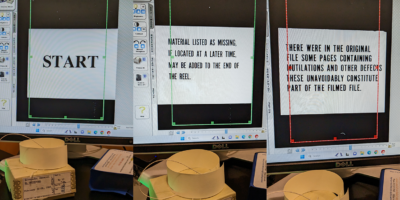By Eileen Liang
I’ve reached that point in the semester where I’ve officially diverged from my original course plan (a not uncommon predicament, as other VP contributors have recently attested). This is both exhilarating and terrifying. When I was first planning the syllabus for my introductory sociology course, I felt a certain amount of power in my ability to say (think), “No, I’m not that interested in this topic. As the instructor I have the agency to change this up and teach a subject I’m more passionate about.” That’s both the beauty and curse of teaching an intro course as an adjunct at CUNY, isn’t it?
Of course, now that I’ve struck out on my own, I’ve begun to feel those tingles of doubt and worry. Before, my course had been grounded in the work of another more seasoned professor’s syllabus and course site. This was someone I would presume knew what they were doing. But I had gone and edited the lesson plans in a moment of “I have agency,” and that meant starting around week 4, we were relying on me and my judgment. And I’m pretty sure I have no idea what I’m doing.
It feels like I have nowhere to go for The Answer. The only information I got from my department was the name of the course I was supposed to teach. Other than that, I was given no guidelines, no departmental requirements, no assigned textbook, nothing! I didn’t even know how many students would be in my class until the night before, thanks to some intrepid sleuthing on CUNYFirst. I had never designed a course before. I had never come up with a lesson plan. How would I come up with assignments? How does one design a quiz?
In my first fit of panic over winter break, I sent out cries for help, reaching out to my own professors and fellow graduate students. That was how I was able to build my initial lesson plans and site off of those of a generous former professor. As someone who largely tries to put my head down and figure out the work (basically, to flounder on my own), this was huge for me, and something that I could have only done while driven by abject fear.
Now, in search of The Answer, I obsessively talk teaching with anyone: From discussing how I can implement group work more efficiently, to comparing strategies for crafting writing assignments with a clear rubric, I have become more comfortable brainstorming with others, as well as asking for help outright. The importance of asking for help is the biggest lesson I’ve learned in my first month of teaching. Because when it comes to this endeavor, I’ve realized: teaching is a community thing.
Yet even with this assistance, I still find myself uncomfortable with my ability to act as arbiter of what is taught and what is left out. And finding out no one I knew had The Answer … well, it made me afraid. What if my students move on to a Level 200 course and found they were thoroughly unprepared because of my choices as an instructor? How could I be accountable for that?
The trouble, at the end of the day, is that a single introductory class can’t possibly cover everything there is to cover in a field. Perhaps the main thing I need to do is own my ability to make the class what I want, especially in the context that a lot of CUNY adjuncts teach—one in which there are basically zero guidelines. There’s a bit of epistemological negotiation when it comes to deciding what or who is included and what or who is left out. The truth is that, even seasoned professors have different ideas of what to teach and how to teach it. The beauty is that we’re all trying to figure it out, together.
Eileen Liang is a doctoral student in Sociology and a Contributing Writer to Visible Pedagogy.









Leave a Reply